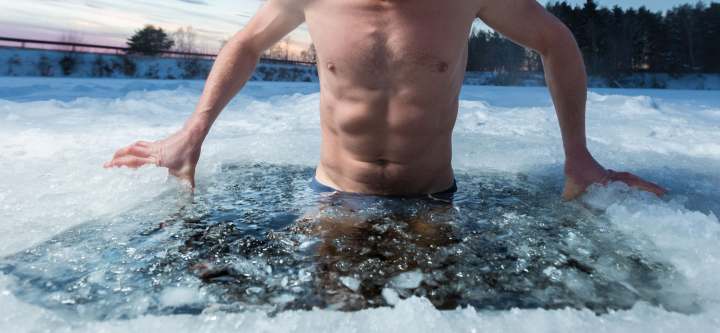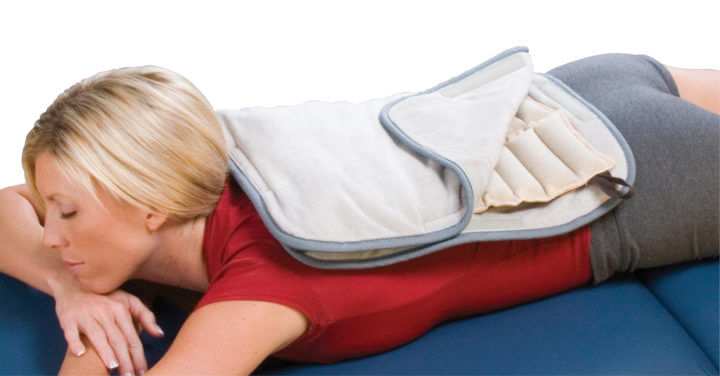Hot or cold recovery therapies are generally used after muscle wasting caused by a workout.
When your muscles are overworked and in need of some kind of urgent recovery, it is not uncommon for us to seek relief from these types of treatments. In fact, for centuries, doctors have used extreme temperatures to relieve pain and speed recovery.
Coaches and therapists have often used hot and cold water therapy in the recovery setting for decades, but which option is really ideal for recovery?

Benefits of ice baths
An easy way to compensate for the risks inherent in long runs is to immerse yourself in cold water, known to many athletes as an ice bath or cryotherapy .
Cold therapy constricts blood vessels and lowers metabolic activity, reducing swelling and tissue breakdown. Once the skin is no longer in contact with the cold source, the underlying tissues become warm, causing a more rapid return of blood flow, which helps move the by-products of cellular breakdown to the lymphatic system for efficient recycling by body part.
For someone experiencing inflammation from overexertion or injury, or looking to prevent injury, cold-based therapy is an effective part of a recovery plan. In addition, you will experience a decrease in muscle pain, which better prepares your muscles for the next workout.

Benefits of heat therapy
Most people associate warmth with relaxation. Whether soaking in a hot tub, sauna, or applying a heating pad to sore muscles, hot temperatures can help muscle fibers for these 3 reasons:
Relax muscles
While freezing temperatures help reduce inflammation, heat helps dilate blood vessels and promote blood flow. If your muscles are spasming, heat is best.
Helps the acclimatization of athletes
Some athletes use saunas to acclimatize to warmer temperatures if they are going to compete or participate in an event in hot weather. They can also be used to loosen up muscles after a workout, but it's not clear if this actually helps.
The most important thing to remember if you decide to use a sauna or infrared sauna is to hydrate yourself. You may already be slightly dehydrated from your training and the temperature of the sauna can cause you to lose even more water.

When to avoid heat therapy
If you have an injury or inflammation, avoid heat therapy for at least two to three days. After the acute phase of the injury, you can use heat to help with recovery and relax your muscles.
A heat pack or soaking in a hot tub can help with muscle strains and promote range of motion. Still, your best bet for promoting recovery after a workout is the tried-and-true solutions: sleep well, eat a healthy diet, and rehydrate properly after your workout.

What is the best form of muscle recovery?
Although heat therapy has some benefits, most high-performance athletes benefit best from ice baths and cold therapy. Scientific studies suggest that while the impact of cold soaking after training may be minimal, it can do a good thing.
In the end, we are trying to prepare our body for the next workout, and the cold is another brick in muscle rebuilding.

When and how to use cold therapy?
Although individual ice packs can be used, cold water immersion generally produces a greater and more lasting change in deep tissues and is a more effective means of cooling large groups of muscles simultaneously. But if the sound of your body being immersed in cold water makes you want to run in the opposite direction, luckily, you don't have to.
To see the benefits of cold water immersion, what you really need is water at 10 or 15 degrees Celsius to have the same benefits as if you were in that ice bath. The water doesn't have to be filled with ice, just cold enough. In fact, that's why, even at the “warmer” temperatures suggested, experts suggest that you only need to soak for up to 10-15 minutes.
Keep in mind that the cold can damage the skin. You may also notice that when you get out of the ice bath, your legs feel stiff. Do not worry, since that is normal: it is the cold repairing the trauma of the tissue at a micro-level; with this you will feel much better the next day.
It is recommended that this recovery be included in your toughest training days, whether in the gym or in any other sport.

How to tolerate an ice bath
To make the ice bath experience more tolerable :
- Fill a bathtub with two or three bags of crushed ice and then add cold water to a height that covers you almost to the waist when you are sitting.
- Before entering, put on a warm jacket, a warm hat and neoprene booties, if you have them.
- Have a cup of hot tea ready and something to entertain you and help the next 15 minutes fly by.
We leave you the best offers of neoprene booties
conclusion
Taking an ice water bath after training is a common practice among many athletes. Whether or not science supports the ice bath theory, many claim that after intense training, it helps them recover faster, prevent injury, and feel better.
In addition to the ice bath, some athletes use and contrast water therapy (alternating between hot and cold water) to obtain the same effect. Try both options and find out for yourself which one works best for you.
References
- Dawson, A. and Kimball, N. (2019). Which Is Better for Recovery: Ice Baths or Hot Therapy? For. Bicycling [Revised January 2020].
- Ford, H. (2018). Hot Or Cold Therapy: What's Best For Muscle Recovery? For. Henryford [Revised January 2020].
- Quinn, E. (2020). Ice Baths and Contrast Water Therapy for Recovery. For. Verywellfit [Revised January 2020].